
If there's anyone that looks forward to Christmas morning as much as children, it's marketers.
Why do we love the holidays so much?
Simply because many consumers are in a celebratory mood and want to buy gifts to mark the occasion.
Those buying patterns mean sales should be easy.
That’s the good news for your holiday SEO campaign.
Unfortunately, your competitors probably recognize the holidays too, and are making their own efforts to bring in more seasonal traffic to their website.
In this ultra-competitive environment, you may be tempted to race to the bottom and use cheap tricks.
Covering your homepage in holiday-themed graphics and music?
That’s not enough if you want to stand out.
Holiday SEO: 7 Evergreen Steps to Harness the Holiday Season
Use this step-by-step plan to leverage the holiday season in your SEO strategy.
1) Make a List of Relevant Holidays
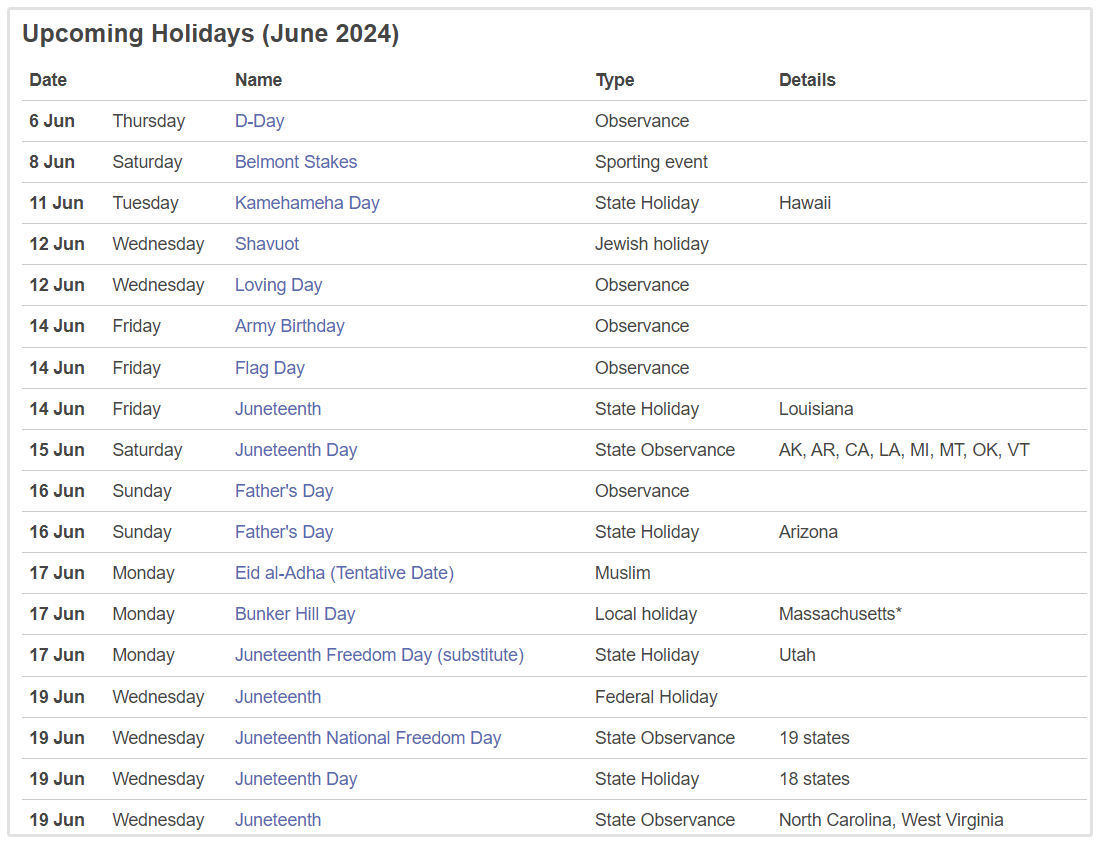
When it comes to holiday SEO, your chances are better if you focus on a small number of holidays.
For retailers, Christmas is the most popular holiday—but it's also the most crowded. Let’s do better!
- Start with the public holidays. By public holidays, I mean those designated as “paid days off,” like Christmas Day and New Year’s Day. Use Statutory Holidays and Holidays and Observances Around the World to identify these days.
If you do business in multiple countries, start with the country which has the majority of your customer base.
- Add secondary holidays. In addition to official or statutory holidays, you should also consider secondary holidays that aren't designated paid days off, such as Valentine’s Day, Mother’s Day and Father's Day.
You can check out Fun Holidays for more ideas.
- Consider international holidays. After focusing on holidays in a single country, you can also look at public and secondary holidays in other countries where you have a significant number of customers.
For example, if you sell to the UK, you may want to add St. Andrews Day (November 30) to the list. If you sell to Australia, you'll probably want to add Australia Day (January 26).
Now that you have a list of relevant holidays to target, let’s plan your holiday SEO campaign.
2) Plan Your Holiday SEO Campaign
If you’re reading this guide a few days before Christmas, it's too late to execute on that holiday opportunity. You need at least two weeks to implement a holiday SEO campaign, and more time is always better.
Planning your campaign depends on both internal and external factors.
Internally, what resources do you have available to work on the project (e.g. content creation, link building, graphic design)?
Externally, what level of competition do you face? The most popular gift-giving holidays such as Christmas will have the highest level of competition.
To keep your campaign simple, you can go with either a crash campaign or an in-depth campaign. Note the trade-offs for each option.
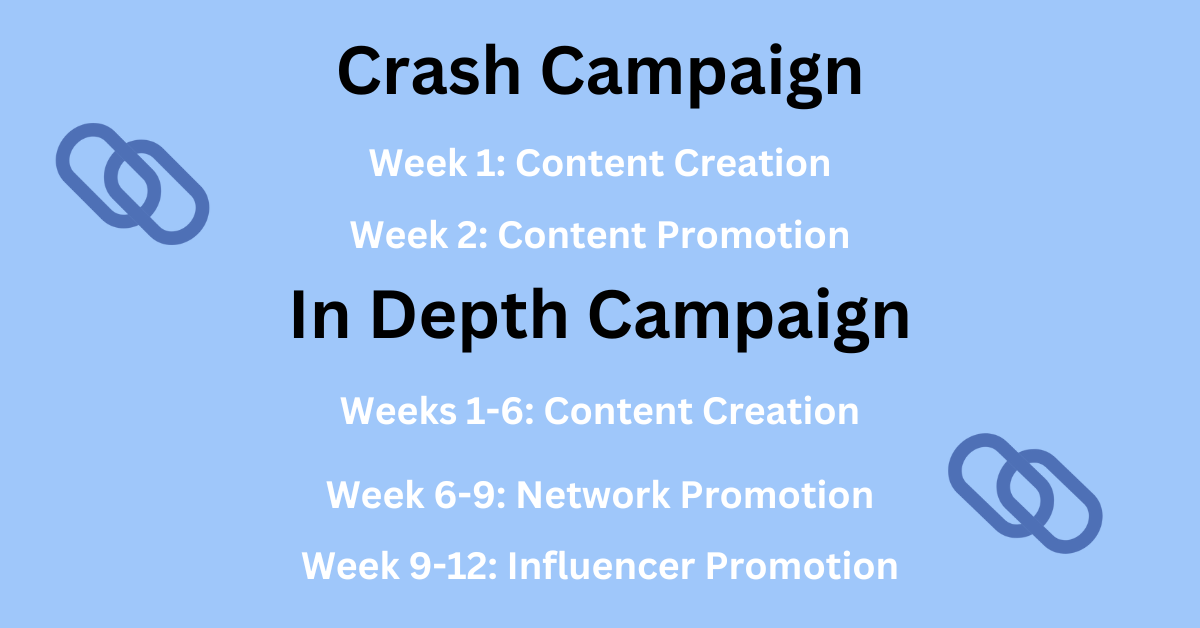
Crash Campaign (2 Weeks)
The holiday is a couple of weeks away, and you want to jump on the bandwagon.
With a clear and impending deadline, you'll be highly motivated to act. The main drawback to this approach is the limited time for content promotion and link building. As a result, you should scale down your expectations for traffic, conversions and sales.
- Week 1: Create content.
- Week 2: Promote content. With limited time, you'll want to focus on your existing network and people you already have a good relationship with.
In-Depth Campaign (3 Months)
If you have 2-3 months lead time for the holiday, you can carry out an in-depth SEO campaign.
I recommend dedicating no more than half of the time to content creation and then the rest of the time to promotion. This approach means you have a better chance of creating an evergreen asset, but it will require significant resources and planning to make it happen.
- Weeks 1-6: Create content.
- Weeks 6-9: Promote content to your existing network and people you already have a good relationship with.
- Weeks 9-12: Promote content to cold contacts, influencers and the media.
Now that you have a clear timeline for your holiday SEO campaign, it's time to make it happen!
3) Refresh Your Keyword Strategy
The next step is to review your current keywords and make sure you're targeting a few keywords in each of the following categories:
- Branded keywords. If you have a distinctive brand name for your company and products, you'll want to include those in your keyword research. For example, Apple would want to rank for “iPhone” and “iPod”-related keywords since those are popular products.
- Buyer intent keywords. These are keywords that suggest a user is actively looking to purchase if they can find the right product. For instance, “car reviews” or “best SUVs in 2018” are two examples of keywords that have buyer intent.
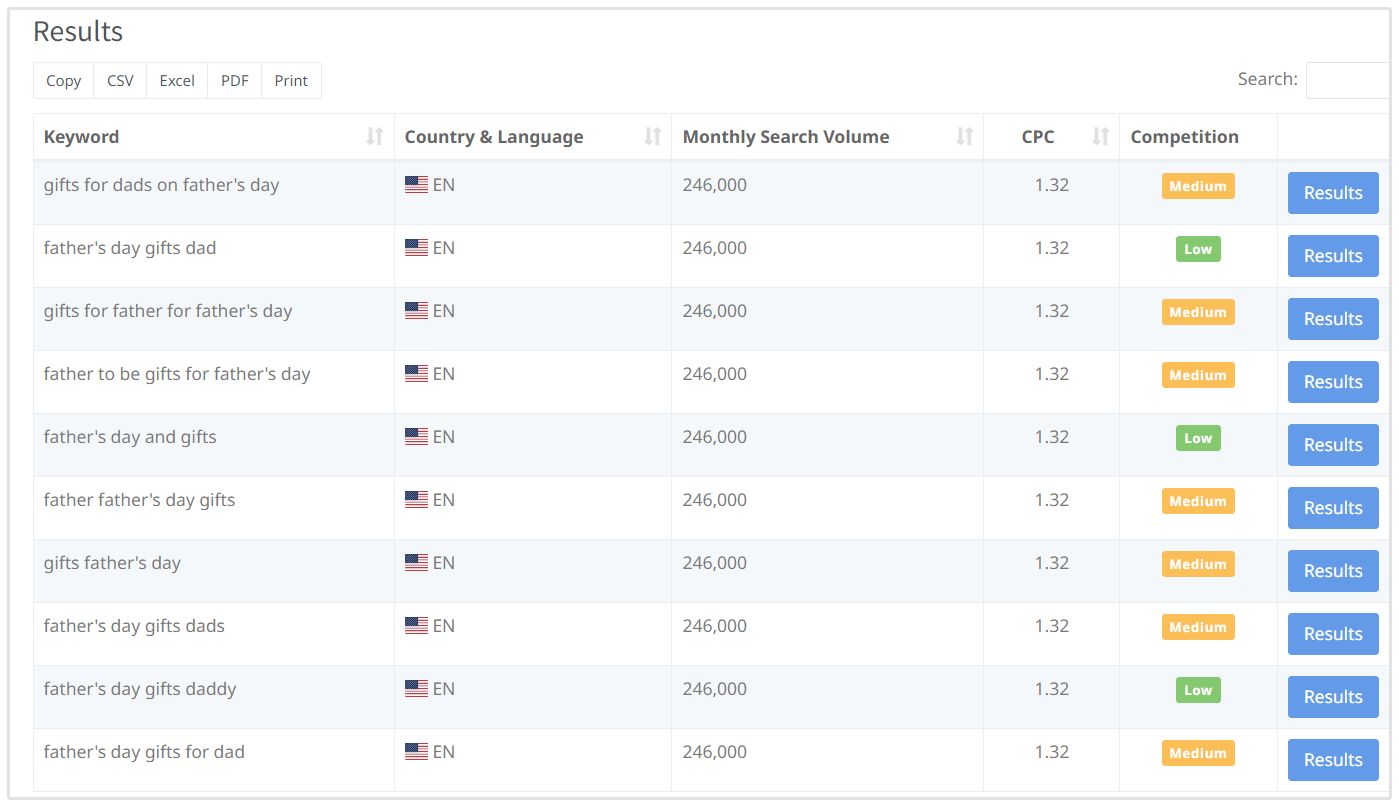
- Informational and other longtail keywords. This category is an area where you can give your keyword research skills the opportunity to shine! Look for ways to answer people's questions and provide useful information that's related to your product or service.
Then, move on to holiday-specific keywords.
For example, Christmas keywords might include things like "best stocking stuffers," "christmas gifts for mom," "last minute christmas gifts," etc.
When it comes to holidays like Valentine's Day, you can consider segmenting your keywords by audience such as "valentine's gifts for women," "valentine's gifts for men" and "valentine's gifts for vegans."
4) Get Content Ideas from Your Competitors
Now that you know what keywords you're targeting, you need to figure out how to target them. What type of content should you create?
Coming up with ideas from scratch is especially difficult when you're pressed for time. To help you make faster progress, I recommend looking at what your competitors are doing, and then try and do something better.
To do that, start with a Google search to see what's ranking for holiday-specific keywords you want to rank for.
Let's go with "mother's day gift ideas" as an example.
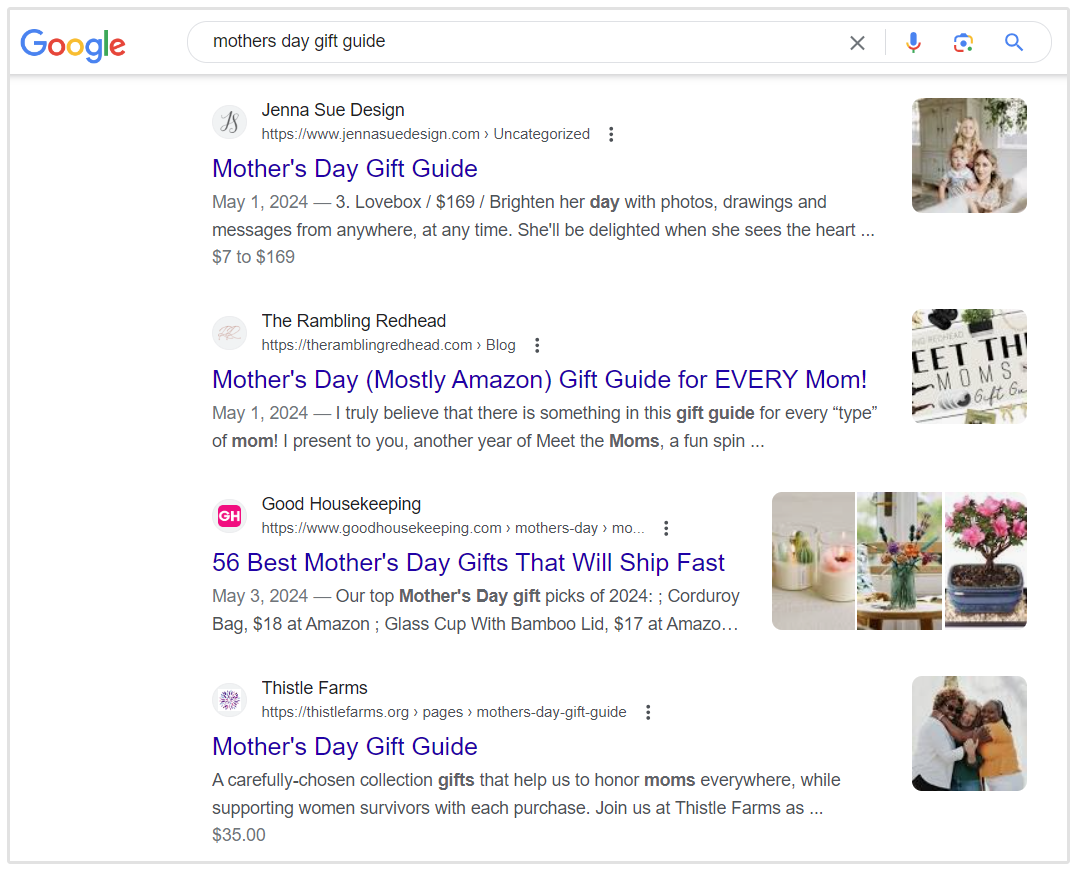
Then, evaluate the top ranking results—these are your competitors. Visit each page and make a note of its:
- Social shares. Use a tool like SharedCount.
- Backlinks. You can use SEO Review Tools for this.
- Page design, structure and content. Put yourself in the shoes of a potential buyer. What do you like most about the page? What are you inspired to click on or buy?
These factors will give you an idea of how popular the article is, and how you can improve on it.
As an example, let's look more closely at the Esquire article "20 Unique Gifts for Mom This Mother's Day." It has a decent number of Facebook shares (134) and backlinks (21), which shows it's popular with their audience. The content and layout is relatively simple.
What could you do better?
I'd consider offering a different design that's more user-friendly—a single page instead of a gallery, with some kind of segmentation. You could also go more in-depth by providing a larger range of products, and offering more information about each one.
Once you've evaluated 5-10 competitor articles, you should have a good idea of what sort of content performs well in your market.
Then use these three factors to fast-track your content creation:
- Structure and format. What has been proven to already resonate with your target market?
- Length and depth. Does your market love in-depth guides or a more image-heavy approach like slideshows? Or something in between?
- Graphic design. If you work with a graphic designer, make their job easier by pointing to some examples of highly successful holiday-related assets.
From there, you can create an outline or brief to guide your content creation work, which will make it much easier than just starting with a blank page.
5) Develop Relevant, Link-Worthy Assets
Now it's time to create the content! Remember that to earn backlinks and traffic, you need to create something that people want to link to.
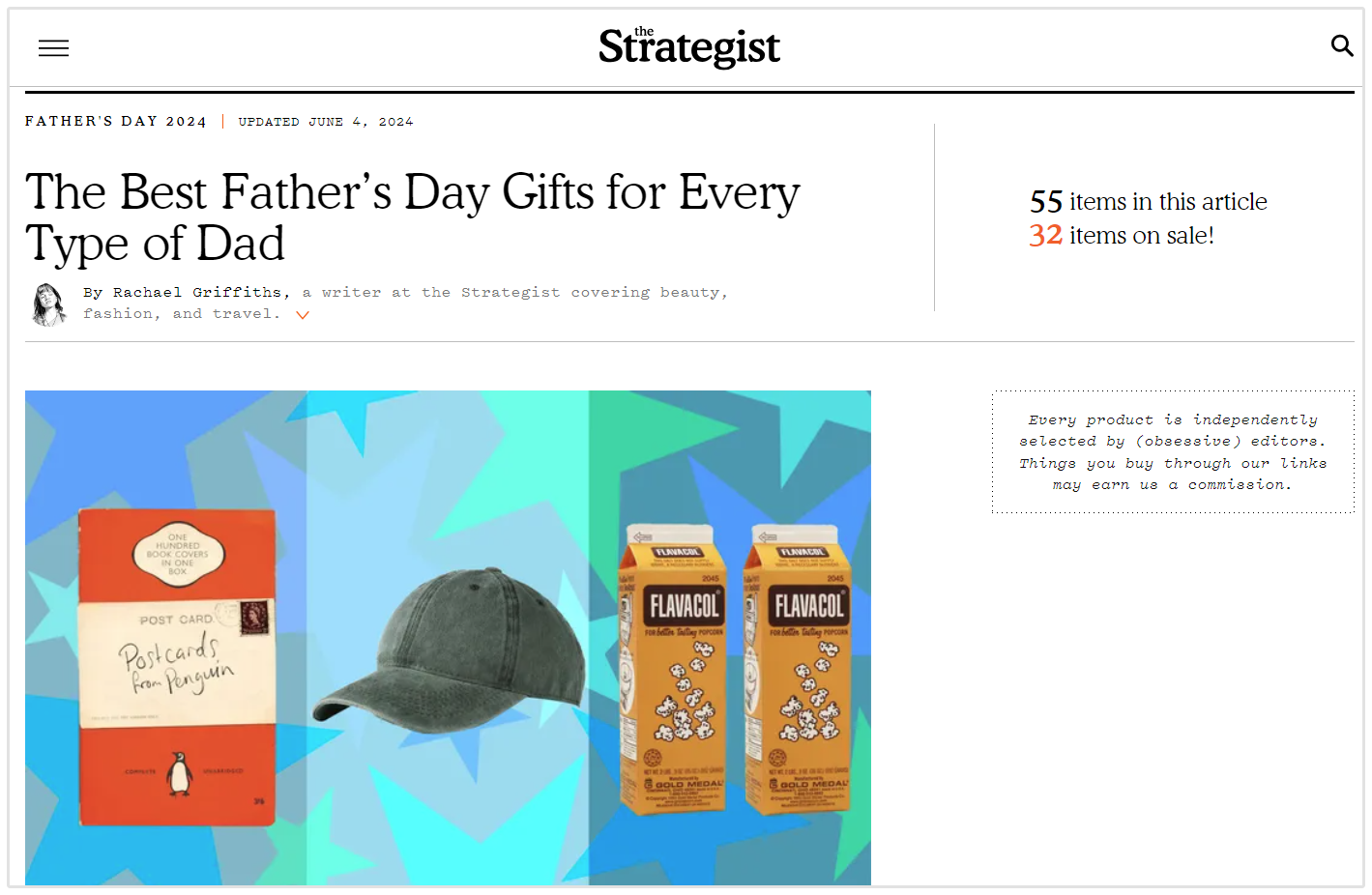
Here are a couple of my favorite examples for different holidays:
- New York Magazine - The Best Father’s Day Gifts for Every Type of Dad
- The Pioneer Woman- 25 Best 4th of July Party Ideas for an All-American Affair
This article has resonated with its market, with more than 28,000 social shares. It's thorough and well illustrated with more than a dozen high-quality photos—a good reminder that image SEO is critical to your holiday campaign, too.
A high-quality holiday SEO asset is evergreen content that can drive traffic to your site year after year. Refresh and update your assets annually to continue receiving more traffic from them.
6) Start Outreach for Backlinks and Traffic
After you publish your holiday-related content, it's time to prospect for links. The process is simple:
Build a list of websites and people who are likely to provide a backlink. Then, reach out to them and let them know about your content.
Specifically, there are three types of people you can ask for links:
1. Your network. These are the people you already know and have a good relationship with. The best place to start is by searching through your 1st-degree LinkedIn connections for ideas.
If you can obtain 2-5 backlinks from your network first, it'll be easier to convince cold prospects to link to you as well.
2. Cold prospects. These are people who have never heard of you. Find them by doing Google searches for your niche, and keep a look out for blogs, guides and review sites that cover what you offer.
3. Media and influencers. If you have sharp PR skills, you can work at reaching out to the media and influencers for links and mentions.
The media generally prefers to reference companies that are already “proven” to a degree. So if you already have a dozen backlinks from other high-quality sites, then you're more likely to get a reporter’s attention.
As you carry out your link building outreach, remember that as much as you want to land links immediately, the ultimate goal is to build a relationship for the long term.
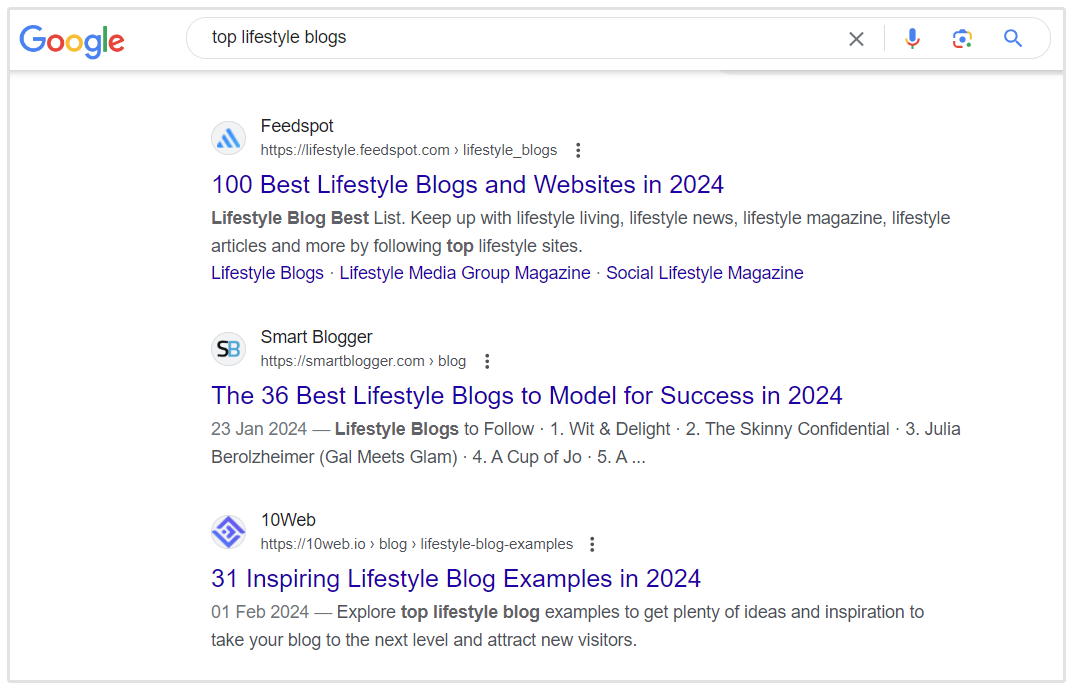
Keep these relationship-building tips in mind:
- Take the time to research properly. Researching each contact so you can craft a hyper-personalized email is how you set yourself apart from the competition. At its most basic, look for a specific contact person for each website.
- Look for a way to give something first. Can you give some kind of support to the website owner first? If you share their site on social media for example, or write a positive review for one of their products, they're more likely to respond positively to your request for a backlink.
- Don't forget to follow up. If you don't get a response after 3-5 business days, make sure to follow up. Be friendly, not pushy.
- Track all your outreach. You can use a simple spreadsheet to keep track of who you've contacted and their responses.
7) Evaluate Your Results
Once you've made it past the holiday, it's time to assess your campaign. Don't skip this step.
Fundamentally, you're trying to answer two questions. First, did the campaign make a meaningful contribution to your business for the time and resources invested? Second, what insights can you take from the campaign to inform your future work?
You can evaluate the results of your campaign by looking at:
- Sales volume. How many sales did you make? Distinguish orders from past customers versus new customers.
- Average order value. This metric helps you measure whether other marketing processes such as upsells and promotions are driving increased transaction value.
- Lead generation. For high-ticket products (over $1,000), you'll want to measure leads generated rather than sales. Leads include email signups and webinar signups.
- Website visits. Using Google Analytics, check how many people visited your holiday-related content.
- Backlinks. In contrast to the above point-in-time metrics, the quality and quantity of your backlinks are a key predictor of future SEO results. If you build a significant number of backlinks this year, you're likely to gain traffic again in the future when the holiday comes around again.
To look more closely at your backlinks, I recommend using SEOptimer.
This tool will automatically track the backlinks pointing to your site, so you can see exactly how many you have and how they're impacting your site. Take a look:
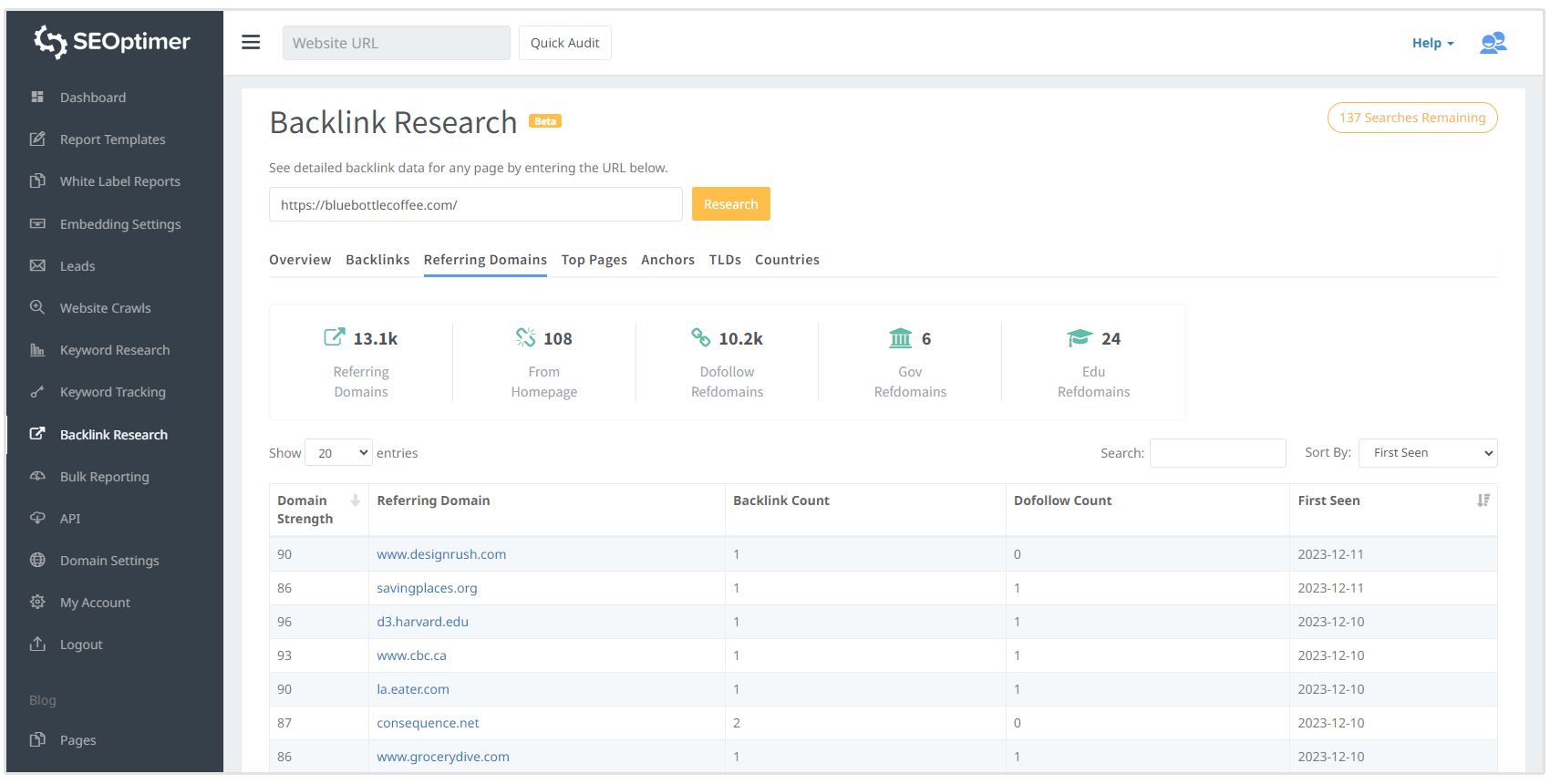
From the Backlink Research tab, you can see a list of all the backlinks pointing to your domain, with the date in the left column showing you when they were added. Your backlinks are automatically ordered by most recent.
To evaluate your holiday SEO campaign, all you need to do is open up SEOptimer and look for some key information.
- Number of backlinks to your holiday content. This tells you how successful your content was with your audience.
The "Target Page" column tells you the URL on your site that received the link.
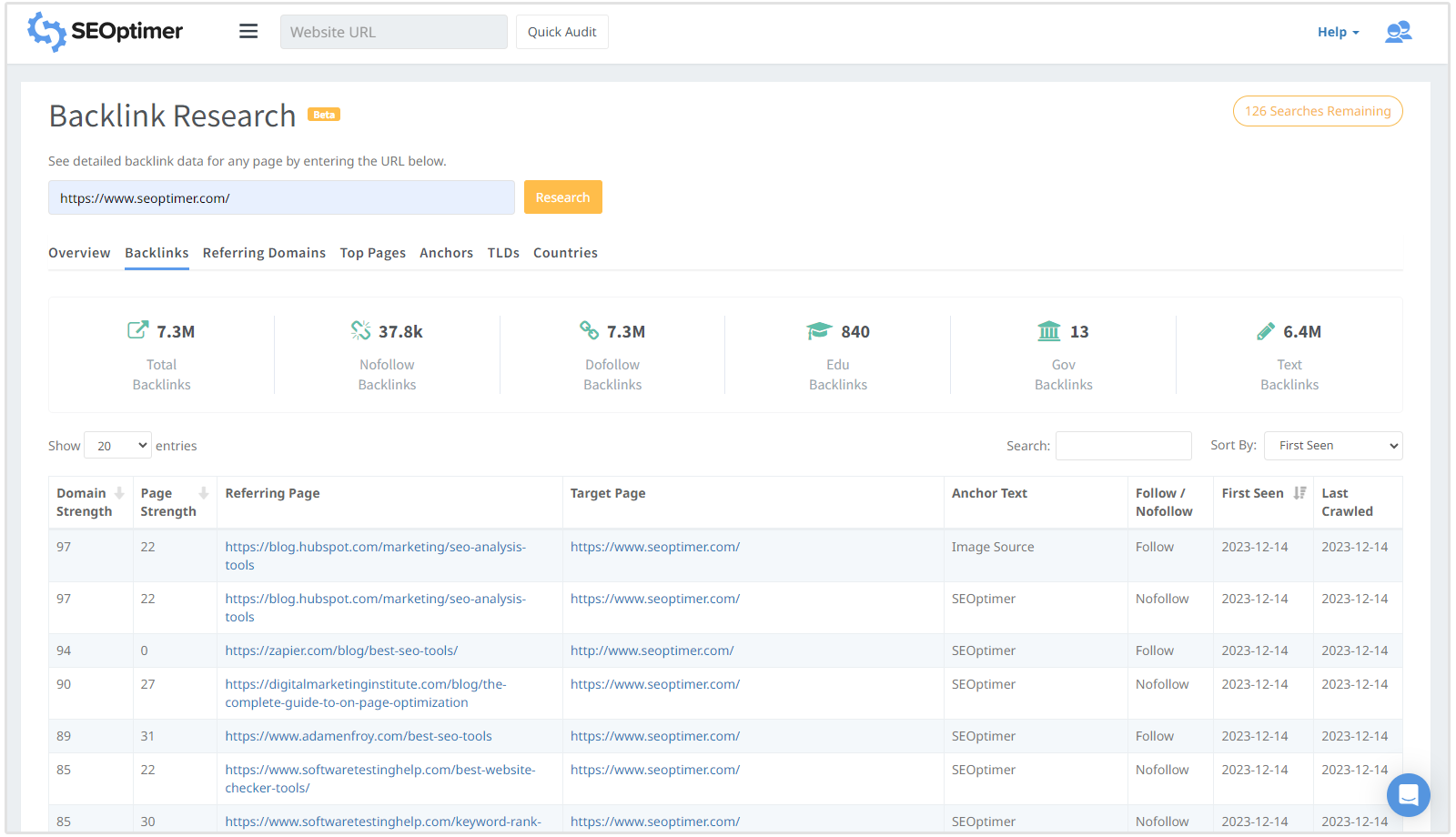
- Number of new backlinks overall. This is important because it tells you if your brand authority is growing.
This time, use the "First Seen" column to find all the backlinks you received after a certain date (say, the date you published your holiday content).
- Quality of backlinks. I like to use the Domain Strength metric to make an initial backlink quality assessment. The higher these metrics, the better quality the backlinks.
You can see this metric in SEOptimer's Backlink Research tool as well:
- Relationship development. The last thing to make a note of is any new relationships that you've developed with influencers, media or others in the course of building backlinks.
Those new relationships make your campaign a long-term success because they'll help you gain backlinks in your future campaigns as well, whether or not they're holiday related.
Holiday SEO Wrap-Up
Holiday SEO is an evergreen strategy that connects your business to popular and profitable holidays.
With high-quality and link-worthy holiday assets, you can drive backlinks, visitors and sales for years to come.
Even better, those website visitors are likely to be easier to convert to customers because they're already in a buying mindset.
Happy holidays!










